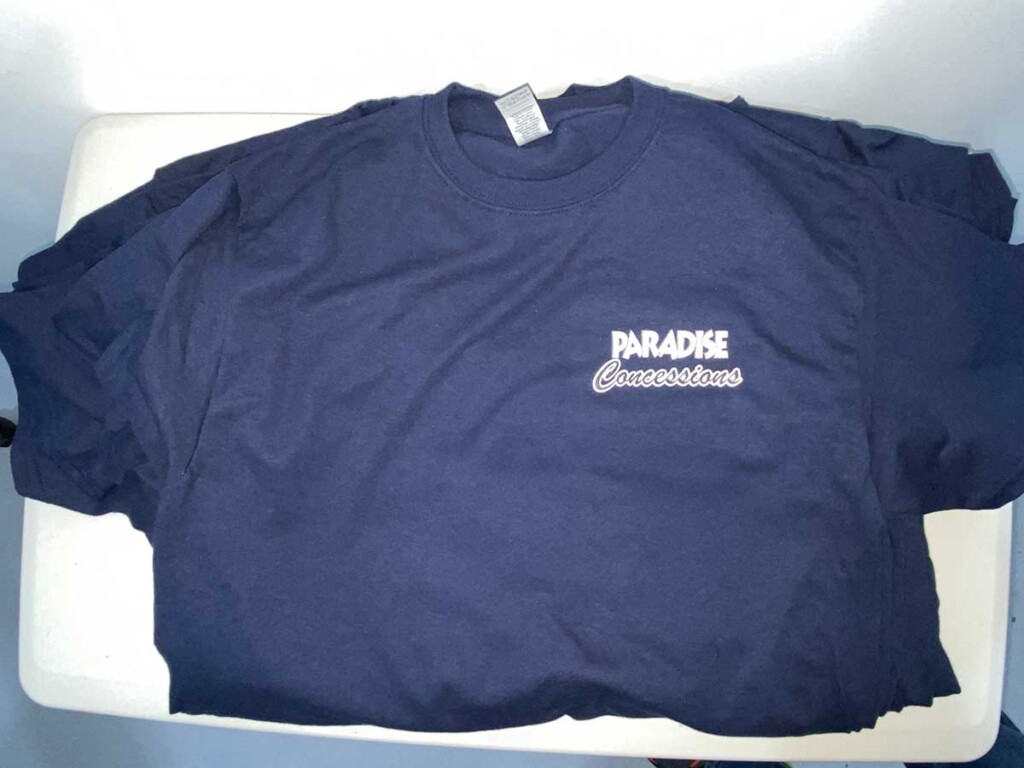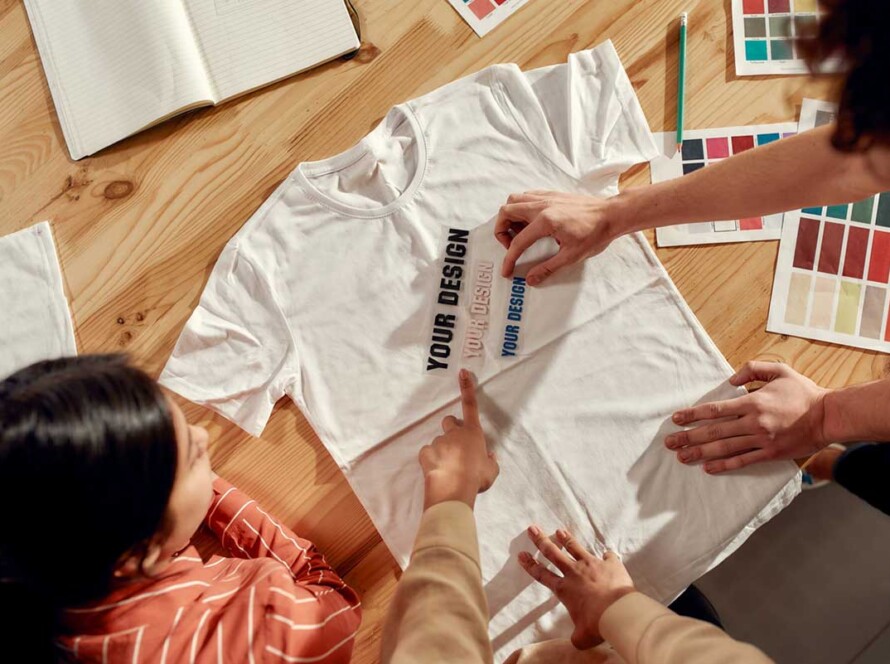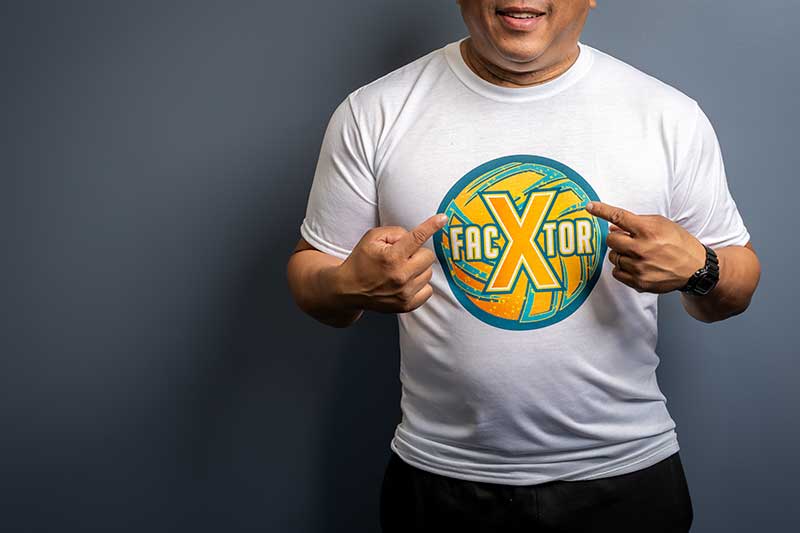In the constantly changing world of t-shirt printing, mastering the various techniques and selecting the appropriate materials can significantly impact the quality and durability of your designs. Whether you are considering traditional screen printing for its vibrant and long-lasting results or investigating the detailed capabilities of direct-to-garment printing, understanding the nuances of each method is crucial. Just as significant is the consideration of fabric types and design complexity to guarantee ideal outcomes. As we delve into the intersection of materials, inks, and design principles, you will discover the keys to creating standout t-shirts that resonate with your audience.
Key Takeaways
- Screen Printing: Offers versatility, durability, and vibrant results suitable for various fabrics by creating stencils to apply ink.
- Heat Transfer Vinyl: Choose the right vinyl type and master the application for professional finishes on diverse materials.
- Direct-to-Garment Printing: Ideal for detailed, eco-friendly designs on 100% cotton garments using specialized inkjet technology.
- Sublimation Printing: Best for polyester fabrics, providing long-lasting, vibrant, and fade-resistant designs with eco-friendly inks.
- Design Tips: Focus on simplicity, use contrasting colors, and choose fonts that reflect your brand’s personality for effective designs.
Screen Printing
Screen printing, a time-honored method widely recognized for its versatility and durability, remains a cornerstone technique in the t-shirt printing industry. Its enduring popularity can be attributed to the robust and vibrant results it produces, making it a favored choice for both small boutiques and large-scale manufacturers. This process involves creating a stencil, or screen, which is then used to apply layers of ink on the fabric. The meticulous layering allows for complex, multi-colored designs that maintain their integrity even after repeated washes.
The appeal of screen printing extends beyond its aesthetic benefits. It offers unparalleled flexibility, accommodating a range of fabrics from cotton to synthetics. Artists and designers appreciate the technique’s capacity for producing fine details and bold colors, while business owners value its cost-effectiveness for bulk orders. The initial setup may be labor-intensive, involving screen preparation and alignment, but the efficiency and quality of mass production it enables are unmatched.
For those seeking creative autonomy, screen printing provides the freedom to experiment with various inks and effects, such as metallic or glow-in-the-dark finishes. This method not only guarantees a high-quality product but also empowers creators to fully realize their artistic visions.
Heat Transfer Vinyl
Heat Transfer Vinyl (HTV) offers a versatile and durable solution for custom t-shirt printing, making it essential to select the appropriate vinyl material for best results. Understanding the application process steps—ranging from cutting and weeding the vinyl to pressing it onto the fabric—ensures a professional finish. This section will guide you through the critical aspects of choosing the right HTV and executing the application process effectively.
Choosing Vinyl Material
Selecting the best heat transfer vinyl (HTV) material is an important step that significantly influences the durability, appearance, and overall quality of your custom printed T-shirts. The right choice of vinyl guarantees that your designs not only look professional but also withstand the test of time, washing, and wear. Here are some key considerations to help you make an informed decision:
- Material Type: HTV comes in various materials like polyurethane (PU) and polyvinyl chloride (PVC). PU is more flexible and softer, ideal for intricate designs, while PVC is more rigid and durable.
- Finish: Choose between glossy, matte, glitter, or metallic finishes to match the aesthetic you want to achieve. Each finish offers a distinct look and feel.
- Adhesive Quality: A high-quality adhesive ensures the vinyl adheres securely to the fabric, enhancing the longevity of the print.
- Thickness: The thickness of HTV can affect ease of application and the final look. Thinner vinyl is easier to manipulate but may not be as durable.
- Compatibility: Make sure the HTV you select is compatible with the type of fabric you are using. Different materials respond differently to heat and pressure.
Application Process Steps
Mastering the application process of heat transfer vinyl (HTV) involves meticulous attention to detail and adherence to specific steps to guarantee a flawless and durable finish on your custom T-shirts. Begin by cutting your vinyl design in reverse on a cutting machine suited for HTV. Attention to detail during this phase is essential to ensure the design transfers seamlessly. Next, weed out the excess vinyl, removing any unwanted material while carefully preserving the intricacies of your design.
Preheat your T-shirt using a heat press for about 3-5 seconds to eliminate moisture and wrinkles, which could impact adhesion. Position the vinyl on the garment, making sure it is correctly aligned. Cover the vinyl with a Teflon sheet or parchment paper to protect it from direct heat exposure.
Set your heat press to the manufacturer-recommended temperature, pressure, and time settings. Typically, this ranges around 305°F (150°C) for 10-15 seconds with medium pressure. Apply the heat press evenly over the entire design. Once done, allow the vinyl to cool slightly before peeling off the carrier sheet. Conduct a final press if necessary to ensure the vinyl is firmly affixed.
Direct-to-Garment Printing
Direct-to-Garment (DTG) printing, a method that utilizes specialized inkjet technology to apply ink directly onto the fabric, offers unparalleled detail and color vibrancy for custom t-shirt designs. This advanced technique employs high-resolution printers that enable designers to create intricate patterns with a broad spectrum of colors, making it an ideal choice for producing high-quality, custom apparel.
DTG printing is particularly advantageous for short-run orders and one-off designs, as it eliminates the need for screens or extensive setup processes. Additionally, the water-based inks used are eco-friendly and provide a soft, breathable finish that integrates seamlessly with the fabric. This method is best suited for 100% cotton garments, ensuring optimal ink absorption and durability.
Notable benefits of DTG printing include:
- High Resolution: Achieves photo-quality prints with detailed color gradients.
- Versatility: Suitable for complex designs and a wide range of color options.
- Efficiency: Quick turnaround times for small batches and custom orders.
- Eco-Friendly: Uses water-based inks that are less harmful to the environment.
- Soft Finish: Inks are absorbed by the fabric, resulting in a smooth and comfortable feel.
In essence, DTG printing marries precision with versatility, offering an excellent solution for those seeking freedom in their design endeavors.
Sublimation Printing
Sublimation printing is a technique that utilizes heat to transfer dye onto materials, typically polyester fabrics, resulting in vibrant, long-lasting designs. This process involves specific materials, such as sublimation inks and transfer papers, which enable the dye to become a gas and bond with the fabric at a molecular level. While this method offers durability and high-resolution prints, it is crucial to consider its limitations, such as the requirement for polyester-based garments and potential color restrictions.
Process and Materials
Perfecting the art of sublimation printing requires a thorough understanding of both the intricate process and the specialized materials involved. Sublimation printing is a method where heat and pressure are used to transfer dye onto fabric, resulting in vibrant, long-lasting designs. This process begins with printing the desired image onto sublimation paper using sublimation inks. The image is then transferred onto a polyester-based fabric by using a heat press, which converts the solid dye into a gas without passing through a liquid phase—a process known as sublimation.
To achieve ideal results, specific materials and equipment are essential:
- Sublimation Printer: A printer capable of using sublimation inks.
- Sublimation Inks: Specialized inks that can change from solid to gas without becoming liquid.
- Sublimation Paper: A coated paper designed to hold and release sublimation inks efficiently.
- Heat Press: A machine that applies both heat and pressure to transfer the dye onto the fabric.
- Polyester Fabric: The most suitable fabric for sublimation due to its ability to bond with the dye at a molecular level.
Pros and Cons
One of the most notable advantages of sublimation printing is its ability to produce vibrant, high-resolution designs that are both durable and resistant to fading. This method employs heat to transfer dye directly into the fabric fibers, resulting in images that do not crack or peel over time. However, it is essential to take into account both the benefits and drawbacks to make sure it aligns with your specific needs.
Below is a table summarizing the pros and cons of sublimation printing:
| Pros | Cons | Notes |
|---|---|---|
| High-Resolution Images | Limited to Polyester Fabrics | Best for 100% polyester materials |
| Long-Lasting and Durable | Higher Initial Setup Costs | Requires specialized equipment |
| Full-Color Printing Capabilities | Not Suitable for Dark Fabrics | Works best on white/light backgrounds |
| No Cracking or Peeling | Limited Fabric Types | Limited to synthetic materials |
| Eco-Friendly Inks | Requires High Temperature | High energy consumption |
While sublimation printing offers unparalleled image quality and longevity, it is crucial to recognize its limitations, particularly its reliance on polyester fabrics and the inability to print on dark materials. For those seeking freedom in design and color without compromising durability, sublimation printing remains a top choice in the industry.
Choosing the Right Materials

Selecting the appropriate materials is essential to achieving high-quality, durable, and visually appealing t-shirt prints. The choice of fabric and ink will significantly influence the final product’s look, feel, and longevity. Understanding the properties of different materials allows you to make informed decisions that align with your artistic vision and commercial goals.
When considering fabrics, cotton, polyester, and blends each have distinct characteristics:
- Cotton: Renowned for its softness and breathability, cotton is ideal for vibrant, detailed prints and provides a comfortable wear. However, it may shrink after washing.
- Polyester: This synthetic fabric is durable, wrinkle-resistant, and retains color well, making it perfect for athletic wear. It can be less breathable than cotton.
- Blends: Combining cotton and polyester offers the best of both worlds—comfort and durability. Blends are versatile and suitable for various printing techniques.
The type of ink used also matters. Plastisol inks are popular due to their versatility and vibrant finish. Water-based inks, though, offer a softer feel and are environmentally friendly. Discharge inks allow for vibrant prints on dark fabrics by removing the dye from the garment.
Choosing wisely ensures your prints meet the highest standards, providing freedom in creativity and execution.
Design Tips and Tricks
Mastering the art of t-shirt design involves a keen understanding of aesthetics, color theory, and the technical aspects of printing to create visually compelling and marketable products. Begin by focusing on simplicity; intricate designs can lose clarity when transferred onto fabric. Opt for clean lines and bold shapes that stand out, making sure your design remains impactful from a distance.
Color selection is crucial. Utilize contrasting colors to improve readability and visual appeal. Familiarize yourself with the color wheel to create harmonious palettes that evoke desired emotions. Consider the fabric color as a backdrop; dark designs on light fabrics and vice versa often produce the best results.
Typography is another critical element. Choose fonts that align with your brand’s personality and ensure readability. Combining different fonts can add dynamism, but avoid overcomplicating the text.
Pay attention to placement. The chest is the most common area, but experimenting with sleeve or back designs can add uniqueness. Always take into account the garment’s contours to ensure the design sits naturally on the fabric.
Lastly, utilize mock-up software to preview how your design will appear on various t-shirt styles. This step can save time and resources by highlighting potential issues before printing.
Frequently Asked Questions
How Do I Properly Wash Printed T-Shirts to Maintain Their Quality?
To guarantee your printed t-shirts remain in excellent condition, keep in mind that an ounce of prevention is worth a pound of cure. Turn the shirts inside out before washing to safeguard the print. Use cold water and a gentle cycle to minimize wear and tear. Avoid using bleach or fabric softeners. Lastly, air drying is preferable, but if you must use a dryer, opt for a low heat setting.
What Are the Common Mistakes to Avoid in T-Shirt Printing?
Common mistakes to avoid in t-shirt printing include using low-quality materials, incorrect temperature settings, and improper alignment of designs. Additionally, neglecting to pre-treat fabrics and failing to test print colors can result in subpar outcomes. Overcrowding designs or ignoring fabric types can also adversely affect the final product. Careful attention to each step guarantees high-quality, durable prints, catering to those who value excellence and artistic freedom in their creations.
How Can I Start a T-Shirt Printing Business From Home?
Starting a t-shirt printing business from home is like planting a seed in fertile soil; with the right care, it can flourish. Begin by researching your market niche and investing in quality printing equipment. Develop a compelling brand identity, create a strong online presence, and use social media to engage potential customers. Master various printing techniques and prioritize customer satisfaction to cultivate a thriving enterprise.
What Are the Best Tools for T-Shirt Design Creation?
To create compelling t-shirt designs, one must utilize professional design tools. Adobe Illustrator and Photoshop are industry standards, offering extensive features for vector and raster graphics. CorelDRAW is another robust option, known for its precision and versatility. For those preferring user-friendly interfaces, Canva and Procreate provide excellent templates and design capabilities. Investing in a high-quality drawing tablet can significantly improve the design process, offering greater creative freedom and precision.
How Do I Price My Custom Printed T-Shirts Competitively?
Imagine a marketplace where your custom printed t-shirts stand out not merely for their design but also for their competitive pricing. To achieve this, evaluate production costs, including materials, labor, and overheads. Research market trends and competitor pricing. Factor in desired profit margins while ensuring value for the customer. Offer tiered pricing for bulk orders and utilize promotional strategies to attract and retain customers, balancing affordability with quality.


